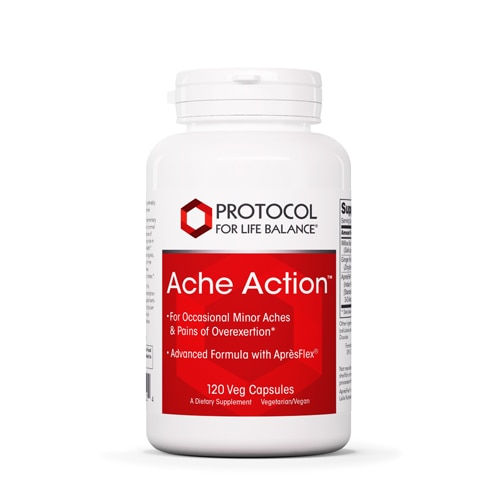[vc_row][vc_column][vc_column_text]You know the persistent, uncomfortable stiffness in your back that can escalate into a wave of aches and spasms on a moment’s notice? Turns out, you’re not alone in this feeling. Chronic low back pain affects nearly
620 million sufferers across the globe.
If you deal with chronic back pain, even basic movements can cause your spine to feel like it’s on fire. But on the flipside, not enough movement can
weaken your core muscles and
worsen that back pain long-term. So, what’s the solution?
The key is to choose a low-impact exercise that will activate the core without exerting too much pressure on the muscles in your lumbar spine. This activity should also be something that fits into your normal routine, which makes it easier to prioritize daily.
Enter: walking. Sure, it might sound overly simplistic—
but research shows that walking 80–130 minutes a week (just 8–11 minutes per day) can relieve chronic low back pain
and help minimize recurrence. Let’s dive into the benefits of walking for sustainable pain relief.

Does Walking Help Lower Back Pain?
What is chronic lower back pain?
According to the
World Health Organization, chronic low back pain is a stiff, achy or tender sensation in the lumbar spine that lasts over three months. It’s the number-one cause of global disability and presents in at least 90 percent of all medical cases.
Lower back pain can occur for many reasons such as:
- Spinal infections
- Musculoskeletal injuries
- Postural misalignment
- Degenerative illnesses (osteoporosis, disk herniation, etc.).
One of the most common—and frustrating—causes is non-specific, which means your low back pain does not have a particular origin. The area is inflamed, but it’s unclear why.
While some non-specific back issues do resolve on their own, if the pain becomes chronic, it can result in more intense symptoms—
or even shoot to your legs and other areas of the body. Chronic lower back pain can also cause
depression,
anxiety or
fear-avoidant behaviors, like a resistance to exercise. But it’s crucial not to let this fear immobilize you.
Walking is beneficial for lower back pain
Because walking is a simple, cost-effective exercise that can be done anywhere, healthcare practitioners often advise it for treating chronic lower back pain. Researchers at Bangledesh’s
Faridpur Medical College found a connection between
pain relief and walking for 10–30 minutes a day. Walking has a low injury rate, and it’s accessible for all fitness levels. It also promotes isometric muscle endurance, which can help with core strength and stability.
As research in the
Medicine Journal points out, walking can alleviate rigidity of motion, too. This will enhance spinal mobility and motor control, which makes it easier to perform daily tasks and functional movements without restriction or discomfort. Walking also reduces chronic back pain recurrence by almost 30 percent, easing the burden on both patients and healthcare systems,
The Lancet reports. Bottom line: It’s a safe and beneficial exercise.
How to implement walking for lower back pain
Due to its
gentle oscillatory (back and forth) motion, combined with low-impact muscle exertion, walking provides sustainable relief to many chronic back pain sufferers. But if you’re hesitant to reintroduce any form of movement out of fear that you’ll exacerbate the pain even more, start with small, incremental lifestyle changes.
Here are a few steps you can take right now to build up to a consistent walking routine—
and reap the long-term benefits.
Consult with a healthcare provider. Before you start a new exercise regimen, talk to a doctor or physical therapist. These clinicians can help you create a walking plan that’s tailored to your specific needs or current ability levels.
Stretch before and after each walk. Perform light
stretches both before and after your exercise session to loosen tense or tight muscles—especially those around the hips, low back and hamstrings. This will also minimize the risk of injury.
Ease yourself in with a flat surface. Walking on uneven terrain could strain your low back muscles even further. Start off with a flat surface then gradually work up to a mild incline if your range of motion allows. The use of trekking poles can also help distribute your weight more evenly to reduce low back pressure.
Increase your duration over time. Begin with short walks (5–10 minutes) 2–3 times a week, to prevent further back strains, then increase the duration as your muscles adjust. Move at a comfortable pace, and slow down or rest if you notice a spike in discomfort. Monitor your progress and aim for daily walks over time.
Supplement with strength exercises. Bolstering the muscles that surround your spine (core, hips, and legs) is also important for functional mobility and long-term pain relief. If you can, include some low-impact resistance training exercises in your routine as well. A physical therapist can show you how to do these movements safely.
Walk your way to less chronic back pain
Whether your back pain is a frustrating inconvenience or a debilitating issue, movement can do wonders for long-term relief. Walking is a simple, accessible, low-impact exercise to help you achieve this. If you’re sick of being in pain and want an effective solution, lace up those sneakers for a neighborhood stroll. You might be surprised by how good it feels![/vc_column_text][/vc_column][/vc_row][vc_row][vc_column][vc_text_separator title="Featured Products" border_width="2"][vc_row_inner equal_height="yes" content_placement="middle" gap="35"][vc_column_inner width="1/3"][vc_single_image image="178521" img_size="full" alignment="center" onclick="custom_link" img_link_target="_blank" css=".vc_custom_1727731243422{padding-right: 7% !important;padding-left: 7% !important;}" link="https://www.vitacost.com/life-extension-lower-back-relief"][/vc_column_inner][vc_column_inner width="1/3"][vc_single_image image="178520" img_size="full" alignment="center" onclick="custom_link" img_link_target="_blank" css=".vc_custom_1727731259526{padding-right: 7% !important;padding-left: 7% !important;}" link="https://www.vitacost.com/garden-of-life-mykind-organics-golden-milk-recovery-nourishment-herbal-supplement"][/vc_column_inner][vc_column_inner width="1/3"][vc_single_image image="178518" img_size="full" alignment="center" onclick="custom_link" img_link_target="_blank" css=".vc_custom_1727731275063{padding-right: 7% !important;padding-left: 7% !important;}" link="https://www.vitacost.com/bluebonnet-nutrition-targeted-choice-pain-inflammation-support"][/vc_column_inner][/vc_row_inner][/vc_column][/vc_row]




